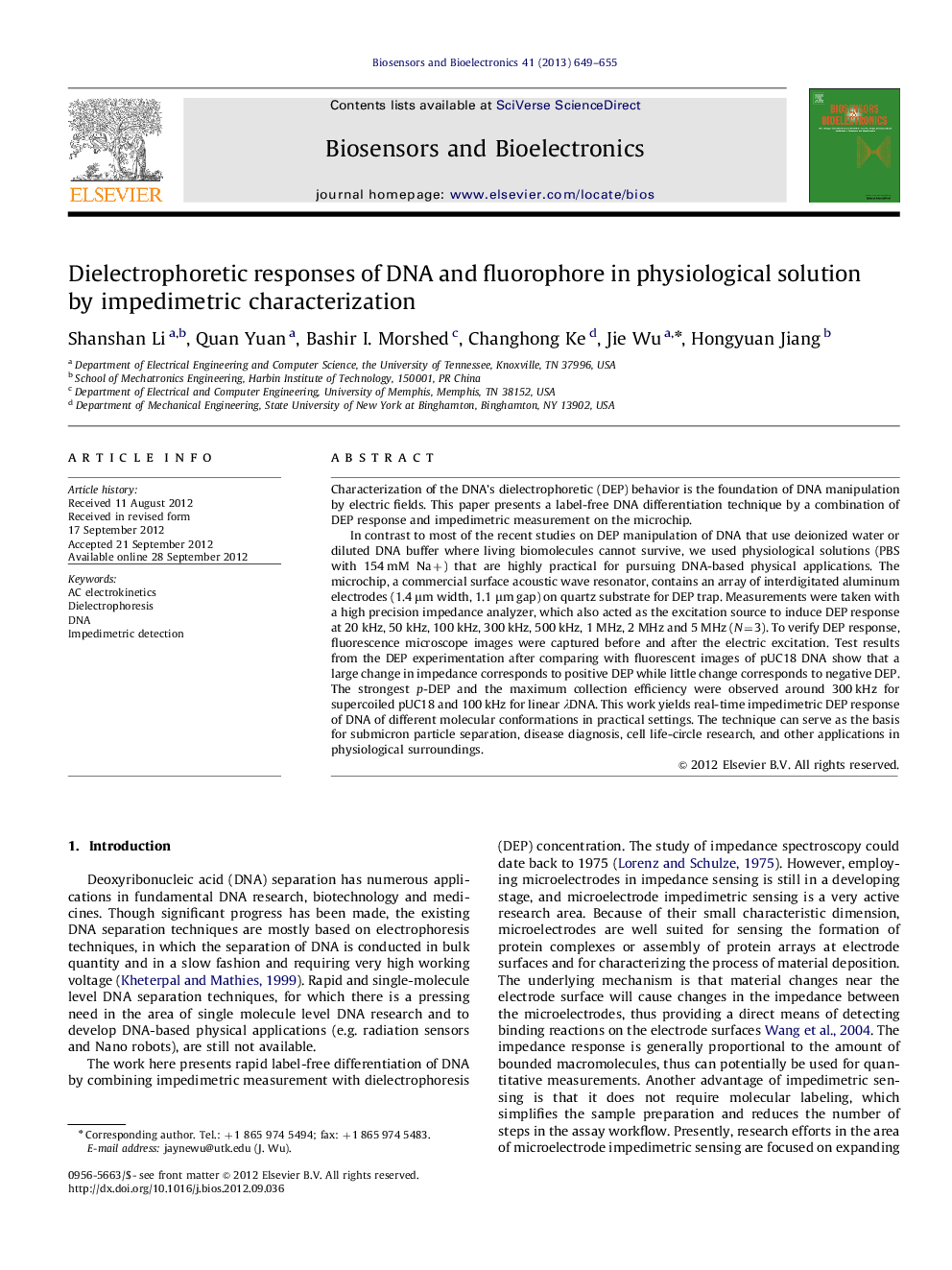| Article ID | Journal | Published Year | Pages | File Type |
|---|---|---|---|---|
| 7234803 | Biosensors and Bioelectronics | 2013 | 7 Pages |
Abstract
In contrast to most of the recent studies on DEP manipulation of DNA that use deionized water or diluted DNA buffer where living biomolecules cannot survive, we used physiological solutions (PBS with 154 mM Na+) that are highly practical for pursuing DNA-based physical applications. The microchip, a commercial surface acoustic wave resonator, contains an array of interdigitated aluminum electrodes (1.4 μm width, 1.1 μm gap) on quartz substrate for DEP trap. Measurements were taken with a high precision impedance analyzer, which also acted as the excitation source to induce DEP response at 20 kHz, 50 kHz, 100 kHz, 300 kHz, 500 kHz, 1 MHz, 2 MHz and 5 MHz (N=3). To verify DEP response, fluorescence microscope images were captured before and after the electric excitation. Test results from the DEP experimentation after comparing with fluorescent images of pUC18 DNA show that a large change in impedance corresponds to positive DEP while little change corresponds to negative DEP. The strongest p-DEP and the maximum collection efficiency were observed around 300 kHz for supercoiled pUC18 and 100 kHz for linear λDNA. This work yields real-time impedimetric DEP response of DNA of different molecular conformations in practical settings. The technique can serve as the basis for submicron particle separation, disease diagnosis, cell life-circle research, and other applications in physiological surroundings.
Related Topics
Physical Sciences and Engineering
Chemistry
Analytical Chemistry
Authors
Shanshan Li, Quan Yuan, Bashir I. Morshed, Changhong Ke, Jie Wu, Hongyuan Jiang,
